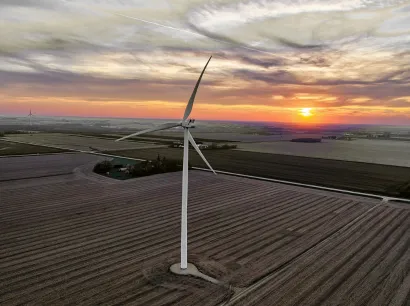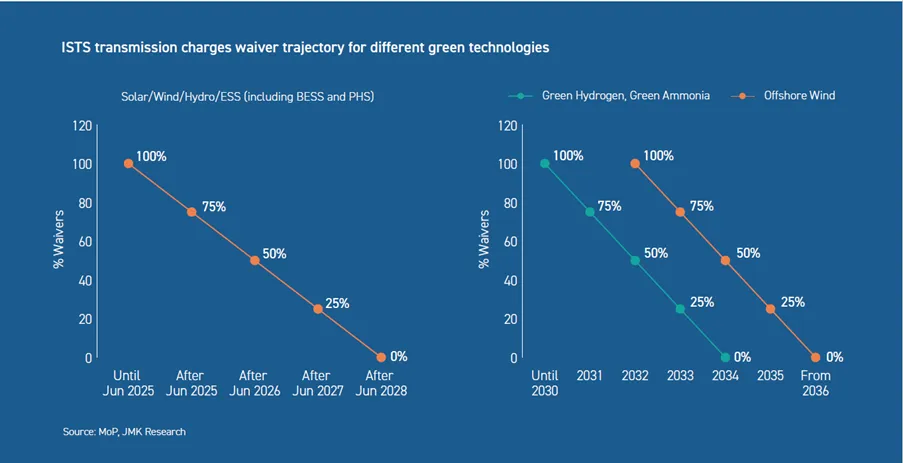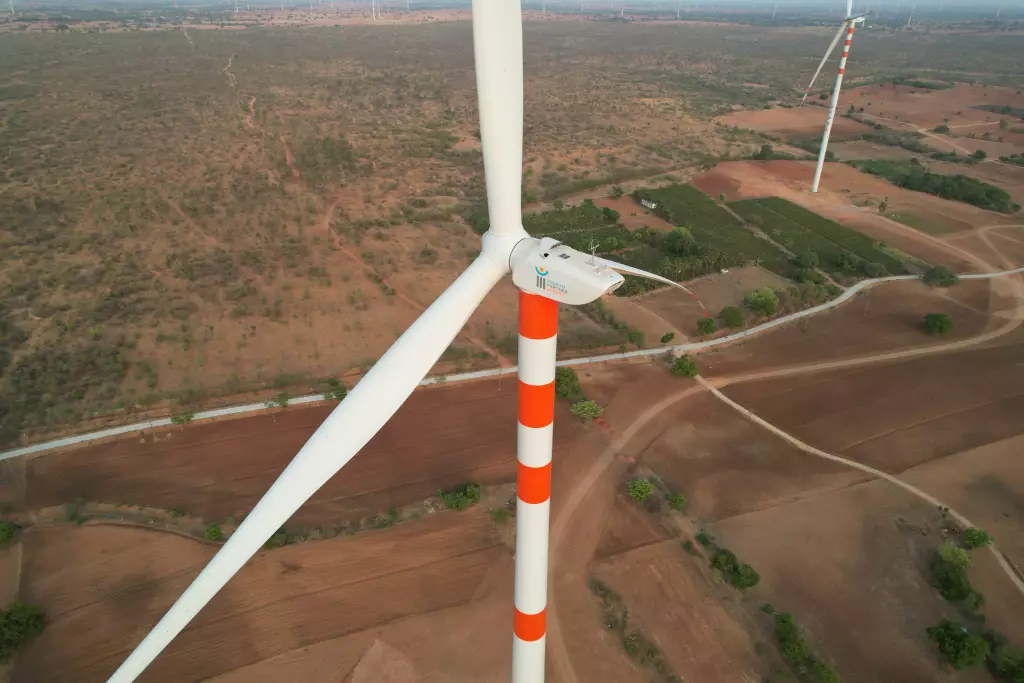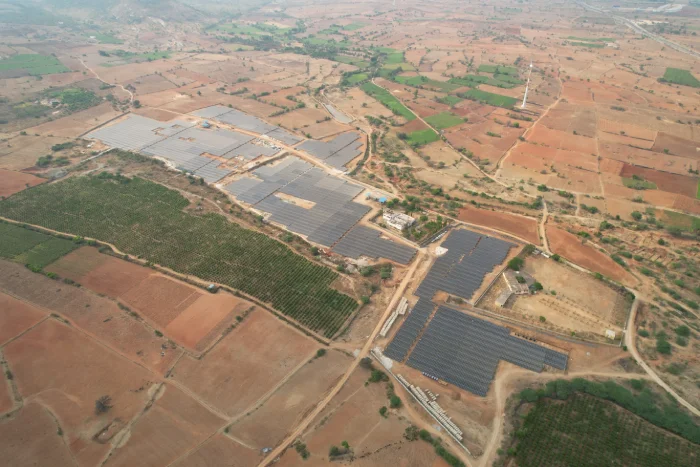
ISTS: The Backbone of India’s Renewable Clean Energy Revolution
As India accelerates its clean energy transition, a critical infrastructural development silently powers this transformation, the Inter-State Transmission System (ISTS). By connecting renewable-rich states with industrial demand centres across the country, ISTS is redefining how energy flows, how corporates procure power, and how India moves closer to its Net Zero goals.
From enabling 24×7 renewable power for industries to supporting the government’s 500 GW target by 2030, RE ISTS stands as the invisible bridge linking generation with demand and ambition with action.
What is ISTS and how can it accelerate Decarbonisation?
Green power generation projects can be categorized as either intra-state or inter-state, depending on whether the power generation and consumption occur within the same state or across state borders. In an intra-state transmission system (InSTS) project, both the generator and the consumer are located within the same state. Conversely, an inter-state transmission system (ISTS) green open access (OA) project enables power delivery between different states. This type of project utilizes inter-state transmission infrastructure, which operates at voltages higher than 132 kV, to minimize energy losses associated with long-distance transmission.
For renewable energy, ISTS plays a vital role. India’s best solar and wind resource zones in Rajasthan, Gujarat, Tamil Nadu, and Karnataka—are often far from industrial demand centres. Without ISTS, renewable power generated in these resource-rich areas would be trapped regionally.
In short, ISTS bridges geography, creates scale, and enables an integrated, flexible power system that makes clean energy accessible across India.
The Role of ISTS in India’s Energy Landscape
The Inter-State Transmission System (ISTS) is the backbone of India’s renewable energy growth. By removing state-level barriers, it enables clean power from resource-rich regions like Rajasthan’s solar hubs and Tamil Nadu’s wind zones to reach industries nationwide.
India aims to achieve 500 GW of non-fossil energy by 2030, and a 340 GW ISTS network is being developed to evacuate 230 GW of solar and wind power. This large-scale infrastructure ensures reliable, inter-state power transfer and supports India’s clean energy ambitions.
For businesses, ISTS unlocks access to renewable energy across states, helping them secure cost-effective, 24×7 renewable power solutions and meet Net Zero goals. To encourage early adoption, the government introduced ISTS transmission charge waivers in 2016, which continue in a phased manner until FY 2028 reducing project costs and accelerating corporate renewable procurement.

Rooftop Solar Plant for HUL
How Does the ISTS Work?
The operation of ISTS follows a structured process ensuring reliability and efficiency:
- Power Generation: Electricity is produced from solar farms, wind parks and hydro plants.
- Grid Connection: Power is transmitted to ISTS substations managed by the Central Transmission Utility (CTU), which steps up voltage to minimize losses.
- High-Voltage Transmission: Electricity flows through 132 kV and above lines across states, maintaining efficiency over long distances.
- Load Management: The Regional and National Load Dispatch Centers (RLDCs/NLDC) balance real-time supply and demand.
- Distribution: Power is stepped down at state substations and distributed to industries and local networks.
Fourth Partner Energy’s ISTS Project
Fourth Partner Energy (4PEL) has been at the forefront of India’s clean energy transition, pioneering large-scale ISTS-connected hybrid parks that enable industries to access reliable, 24×7 renewable power solutions. One of the flagship projects leading this effort is the Kudligi ISTS Park in Karnataka, designed to redefine how corporate India procures green energy beyond geographical boundaries.
Located in the heart of Karnataka’s renewable corridor, the Kudligi ISTS Park is a 564 MW wind-solar hybrid project, which is divided into three phases with Phase 1 (66 MW) already commissioned and Phases 2 (216 MW) and Phase 3 (180 MW) currently under construction. The park integrates wind and solar generation with advanced power evacuation infrastructure, ensuring a balanced, high-capacity output that feeds directly into India’s Inter-State Transmission System (ISTS).


Phase 1 Kudligi ISTS Wind – Solar Hybrid Park-- 66 MW
This setup allows inter-state power transfer to commercial and industrial consumers nationwide, leveraging the CTU connectivity process for seamless integration. The project also benefits from the ISTS transmission charge waiver, making round-the-clock renewable energy procurement more cost-effective for corporate offtakers.
Kudligi embodies FPEL’s mission: to deliver affordable, reliable, and sustainable power, making green energy available anytime, anywhere.
How can Businesses benefit from adopting clean energy via the ISTS route?
For industries seeking 24×7 renewable power solutions, ISTS offers flexibility, scalability, and access like never before.
- Pan-India Access: Source green power from renewable-rich states via ISTS.
- Cost Efficiency: Benefit from transmission charge waivers and high plant load factors.
- Portfolio Flexibility: Combine solar, wind, and storage for round-the-clock supply.
- No Land Constraints: Procure offsite renewable energy without owning land.
- Sustainability Leadership: Support RE100 and Net Zero goals with traceable, verifiable energy sources.
Partnering for a Greener Tomorrow
As India’s renewable energy ecosystem evolves, the Inter-State Transmission System (ISTS) is unlocking limitless potential, enabling industries to go beyond boundaries and embrace 24×7 renewable power as the new normal.
At Fourth Partner Energy, we are proud to be at the forefront of this transformation, building ISTS-connected hybrid parks like Kudligi, designed to empower corporates with clean, reliable, and cost-effective energy across India.
Whether you are a business looking to decarbonize operations, achieve RE100 commitments, or secure round-the-clock renewable power solutions for industries, 4PEL’s expertise and pan-India presence ensure a seamless transition toward sustainable growth.
Frequently Asked Questions on ISTS and Renewable Energy Integration
What is the role of ISTS in promoting renewable energy?
The Inter-State Transmission System (ISTS) plays a critical role in India’s clean energy transition. It enables large-scale solar and wind projects to supply power across state borders, overcoming geographical limitations. By facilitating Green Open Access, ISTS allows consumers and industries to source renewable power from any state, making clean energy more accessible and reliable.
Who manages the ISTS in India?
The Central Transmission Utility of India Limited (CTUIL), under the Ministry of Power, manages and oversees ISTS operations. CTUIL ensures seamless grid connectivity, grid discipline, and efficient inter-state power flow, supporting India’s goal of achieving 24×7 renewable power through a strong and unified national grid.
How is India addressing the challenges of ISTS implementation?
India is strengthening its grid through initiatives like the Green Energy Corridor Project, promoting energy storage integration, and streamlining open access regulations. These steps, combined with expanded ISTS infrastructure and extended waivers, are ensuring that renewable energy can flow freely and efficiently across states to meet national clean energy targets.
How does Fourth Partner Energy’s Kudligi ISTS Park support corporate sustainability goals?
Fourth Partner Energy’s 564 MW Kudligi ISTS Park in Karnataka is a model for corporate decarbonization. Connected directly to the national grid, it supplies reliable wind–solar hybrid power to industries across India. By leveraging ISTS connectivity and government charge waivers, it enables corporates to procure verifiable, affordable, and continuous green energy, helping them meet Net Zero and RE100 commitments.




